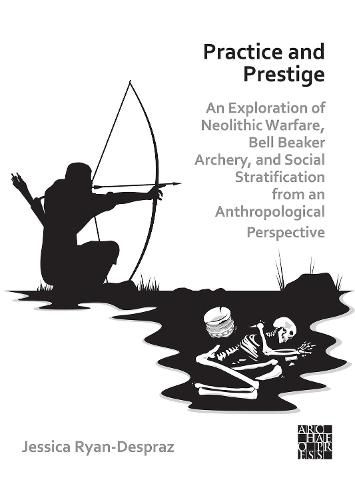Readings Newsletter
Become a Readings Member to make your shopping experience even easier.
Sign in or sign up for free!
You’re not far away from qualifying for FREE standard shipping within Australia
You’ve qualified for FREE standard shipping within Australia
The cart is loading…






Practice and Prestige: An Exploration of Neolithic Warfare, Bell Beaker Archery, and Social Stratification from an Anthropological Perspective investigates the appearance of the ‘archer’s package’ in select Bell Beaker burials raising questions of daily life, warfare, and social stratification during the Neolithic period. It draws on a recent study by the author that applied an anthropological methodology to assess the bone morphology of these skeletons for signs of specialised archery activity. These analyses revealed results at both a population as well as an individual level. In order to contextualise these osteological findings, the book explores the evidence for warfare and archery throughout the Neolithic period in general and the Bell Beaker period in particular. This perspective considers warfare to be a primary function of archery, thereby associating ‘archer’ burials with concepts of warfare and the warrior. A second perspective delves into prehistoric concepts of specialisation and social hierarchy in order to situate archers, archery, and warfare within potentially stratified populations. These two perspectives allow for the contextualisation of the anthropological results within a broad archaeological framework in which archers and archery were prominent parts of a complex Bell Beaker society.
$9.00 standard shipping within Australia
FREE standard shipping within Australia for orders over $100.00
Express & International shipping calculated at checkout
Practice and Prestige: An Exploration of Neolithic Warfare, Bell Beaker Archery, and Social Stratification from an Anthropological Perspective investigates the appearance of the ‘archer’s package’ in select Bell Beaker burials raising questions of daily life, warfare, and social stratification during the Neolithic period. It draws on a recent study by the author that applied an anthropological methodology to assess the bone morphology of these skeletons for signs of specialised archery activity. These analyses revealed results at both a population as well as an individual level. In order to contextualise these osteological findings, the book explores the evidence for warfare and archery throughout the Neolithic period in general and the Bell Beaker period in particular. This perspective considers warfare to be a primary function of archery, thereby associating ‘archer’ burials with concepts of warfare and the warrior. A second perspective delves into prehistoric concepts of specialisation and social hierarchy in order to situate archers, archery, and warfare within potentially stratified populations. These two perspectives allow for the contextualisation of the anthropological results within a broad archaeological framework in which archers and archery were prominent parts of a complex Bell Beaker society.